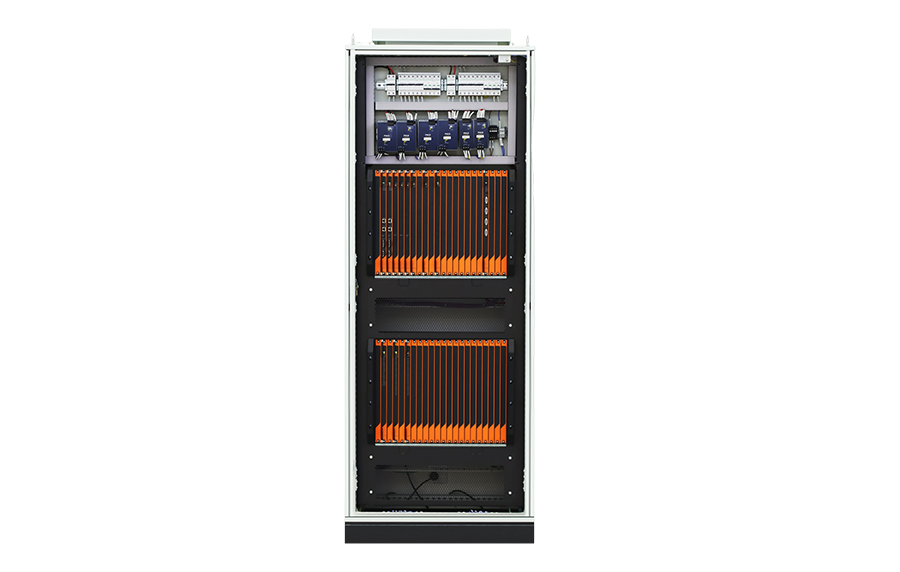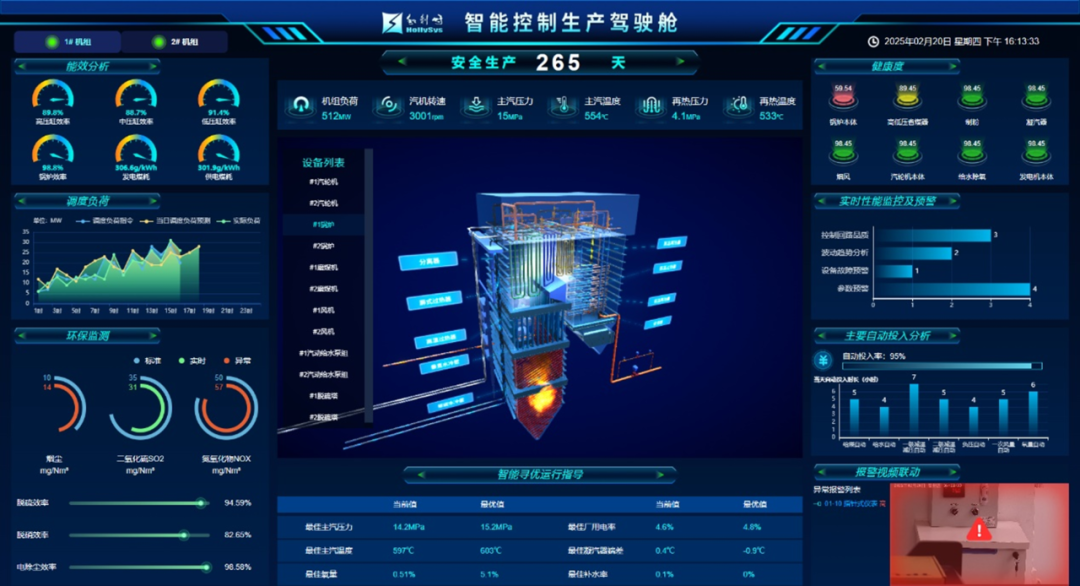

News
author:GCC
As global manufacturing moves into the deep waters of the new industrial revolution centered on intelligence and digitalization, industrial automation has become a key force driving industrial upgrading and reshaping the competitive landscape. From the precise control of intelligent robots to the comprehensive connection of industrial internet, from the dynamic optimization of flexible production lines to AI-driven autonomous decision-making - technological breakthroughs are constantly redefining the boundaries of "manufacturing". Against this backdrop, in this issue of the "Living Room", we visited HOLLIS, a member of the Global Computing Consortium (GCC) and the Edge Computing Development Group (EC DG), and specially invited Huang Jinsong, the vice president of Hangzhou Hollysys Automation Co., Ltd. and the vice president of the Central Research Institute of Hollysys Technology Group, to share HOLLIS's technological exploration and project practical experience in the field of process industrial automation.
In this video, Dean Huang Jinsong will share his experience in the industry for more than 30 years, and have a dialogue on key issues such as technological breakthrough path, benchmark project implementation, industry standard formulation and industrial chain coordination.
https://mp.weixin.qq.com/s/aEjbN3RMjr2cT9Hp2jcw3Q
Click to view the interview video
Technical breakthrough :Innovation from catching up to leading the way
In the field of industrial automation, ensuring the stable and reliable operation of core control systems in extreme environments such as high temperatures, high humidity, and strong electromagnetic interference has become a critical bottleneck constraining product development for many manufacturers. When reflecting on Hollysys' journey since its founding in 1993, Huang Jinsong candidly stated: "For over three decades, our greatest challenge has been maintaining the stability and reliability of control systems in harsh industrial environments. Throughout this process, we have conducted extensive exploration and practical implementation."
Since launching China's first DCS (Distributed Control System) in 1993, Hollysys has successively introduced the nation's inaugural large-scale PLC (Programmable Logic Controller), SIL3-certified SIS (Safety Instrumented System), and OCS (Optical Bus Control System), establishing a comprehensive technical benchmark framework.
At present, Hollysys has a number of R&D or simulation test centers in petrochemical industry, thermal power, nuclear power, rail transit and other fields. Among them, Hollysys reliability Test Center has passed TUV (German Technical Inspection Association) ISO/EC 17025 laboratory certification, and is the first reliability test center in automation field to pass TUV certification in China.
The road of technological breakthroughs of Hollysys not only records the development of Hollysys itself, but also engravings the progress trajectory of China's industrial automation industry.

HiaGuard safety instrumented system (SIS)
Project Practice:Benchmark case of super large refining and chemical engineering
In recent years, China's investment sector has continued to flourish. In this process, Hollysys, as a leading enterprise in the field of automation, has participated in the design and implementation of many national super large refinery automation systems with its significant technical and integration advantages.
During the 2024 "Double 11" shopping festival, Sinopec's Tianjin Nangang 1.2 million tons/year ethylene and downstream high-end new materials industrial cluster project officially commenced commercial operations. The entire system adopted Hollysys' control solutions, marking China's first million-ton ethylene project to achieve domestic production of both DCS (Distributed Control System) and SIS (Safety Instrumented System). Throughout implementation, Hollysys employed the internationally recognized MAV (Master Automation Vendor) model, deeply engaging in automation system design, supply, and engineering services throughout the project lifecycle. By integrating experience from over 20 large-scale projects, the company helped clients effectively manage complex construction models, mitigate risks, optimize processes, and ensure smooth project execution.
This successful practice not only validates Hollysys' technical strength in very large refining and chemical projects, but also provides a model for engineering management and project implementation for the industry, further consolidating its leading position in automation.
Standard guidance:Industry responsibility and commitment of head enterprises
Automation systems serve as the "nervous system" of industrial operations, with standards forming the essential foundation that ensures efficient operation and seamless interconnectivity among subsystems. When industrial automation enterprises adopt a fragmented development model characterized by technological fragmentation and poor equipment compatibility, these issues become bottlenecks hindering industry upgrading. Only through establishing a comprehensive standardization framework can we prevent "nerve system disorders" and ensure the secure, stable, and healthy development of industrial and supply chains.
As a leading enterprise in China's automation sector, Hollysys not only focuses on its own development but also directs its attention to technological advancements across the industry. The company has actively participated in formulating multiple national and group standards, including "General Specifications for Clock Synchronization, Management, and Measurement in Smart Factory Industrial Automation Systems", "Safety Instrumented Systems", and "Smart Valve Positioners for Industrial Process Control Systems". By systematically refining key experiences and best practices—from chip selection criteria during R&D phases to production testing procedures and field commissioning standards in engineering implementation—and integrating them into the national standard system, Hollysys continuously drives technological progress and industrial upgrading within the industry.
Future layout:Data-driven intelligent upgrade and security assurance
At present, the industrial Internet and AI technology are being accelerated into the traditional industrial process. Dean Huang Jinsong introduced to us two important measures of Lishih's layout of intelligent upgrading of automation system under this background.
1. XMagital system: data-driven intelligent hub
In the process of industrial intelligent transformation, data has become a core element reshaping production models. Hollysys' XMagital Intelligent System focuses on comprehensive value extraction across the entire data chain, transforming raw data collected from industrial sensors into actionable optimization strategies. This establishes a closed-loop system from data acquisition to intelligent decision-making, driving factory operations and control upgrades from "automation" to "autonomousization".

Smart monitoring of XMagital system
2. Trusted computing: Active defense of industrial information security
As data becomes a core corporate asset, information security serves as the essential foundation for operational safety. Trusted Computing technology ensures the integrity and traceability of industrial control commands through chip-level trust roots and remote attestation mechanisms, effectively addressing the industry-wide challenge of traditional industrial control systems where "threats are visible but their origins remain hidden." Hollysys pioneered the integration of Trusted Computing into industrial control systems, breaking through the limitations of conventional external passive defense solutions. This breakthrough established an active defense framework akin to the human immune system, achieving intrinsic security within automated systems.
Ecological synergy:Industry-university-research co-creation under GCC platform
In the intelligent era, technological breakthroughs and commercial implementation in industrial automation can no longer be achieved by a single enterprise. As users increasingly demand higher standards for technology, products, and solutions, no single manufacturer can provide complete and satisfactory integrated solutions through "single-handed efforts".
As a member of the Global Computing Consortium (GCC) and an active participant in the GCC Edge Computing Industry Development Committee (EC DG), Hollysys has deeply recognized the unique value of the GCC platform in driving industrial collaboration. As President Huang Jinsong aptly noted: "The development of new productive forces and the adoption of a new industrialization path fundamentally represent a process where suppliers, end-users, and industry-academia-research-application entities achieve joint technological innovation." The GCC platform effectively consolidates previously fragmented innovation capabilities by establishing unified technical standards and fostering collaborative ecosystems. Hollysys looks forward to working with the Global Computing Consortium and industry partners to explore the promising future of industrial digitalization.
epilogue
Looking back over the 30-year development journey, Hollysys has forged a solid path for tackling challenges in domestic industrial automation technology, progressing from technological breakthroughs to standard leadership and then to collaborative ecosystem building. As the cornerstone of manufacturing upgrading, industrial automation serves as the core driving force behind "new-quality productivity" and "new-type industrialization". Huang Jinsong stated that in the future, Hollysys will continue to be user-centric, deepen core technologies, expand industry ecosystems, and contribute more to the safety, efficiency, and green development of process industries. By collaborating with the Global Computing Alliance and industry partners, we will jointly explore the future of industrial digitalization and write a new chapter in China's intelligent manufacturing.